Being a former SCA (Steak Cookoff Association) judge, I have officially judged hundreds of amazing Ribeye Steaks from world champions to backyard grill heroes. This recipe is my tried-and-true method to be able to get an award winning steak in your own home with minimal effort! While some might think of cooking a ribeye as intimidating, here you’ll learn how easy it is to make steakhouse-style steaks in well under an hour.
Why Our Recipe
- As an official SCA judge I’ve cooked more steaks than I can count. Trust me when I say: I am one with the steaks!
- We have no-fail steps for searing, baking, basting, or grilling ribeye steaks to the perfect doneness.
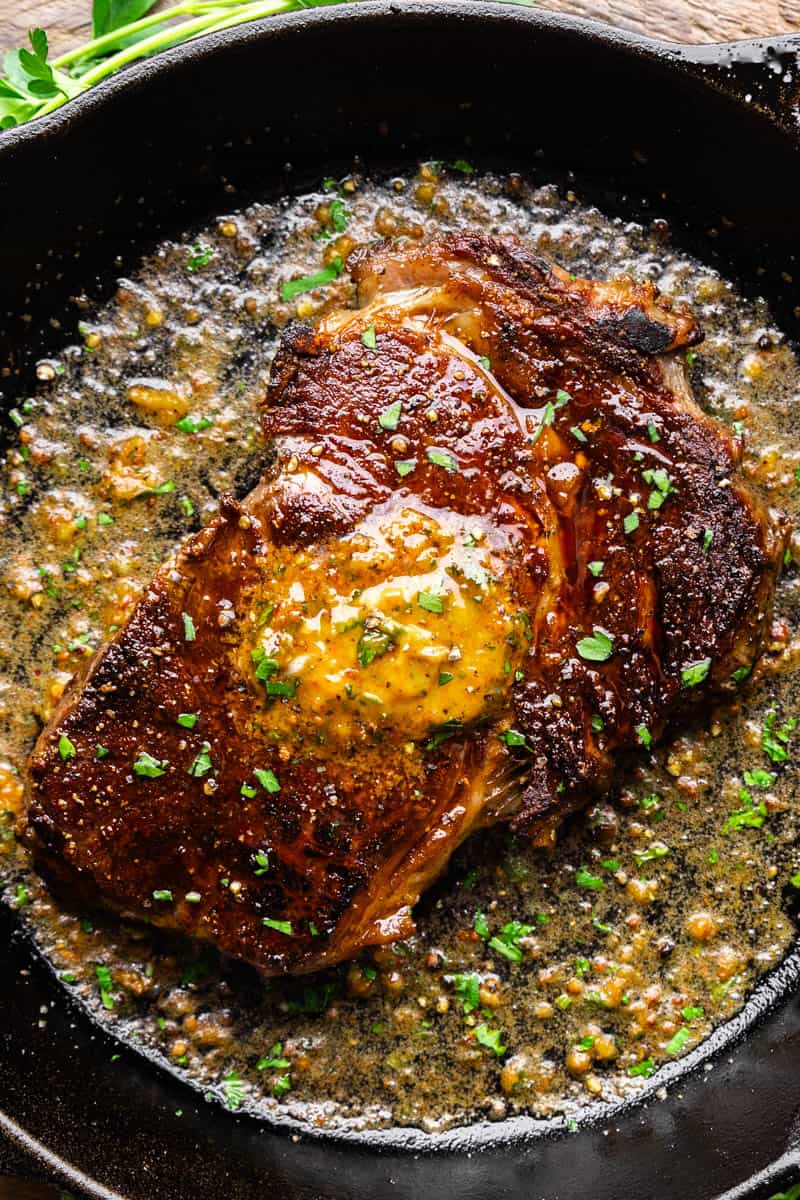
The key to cooking the best ribeye steaks is to keep things simple with just a few quality ingredients treated right.
Ingredient Notes
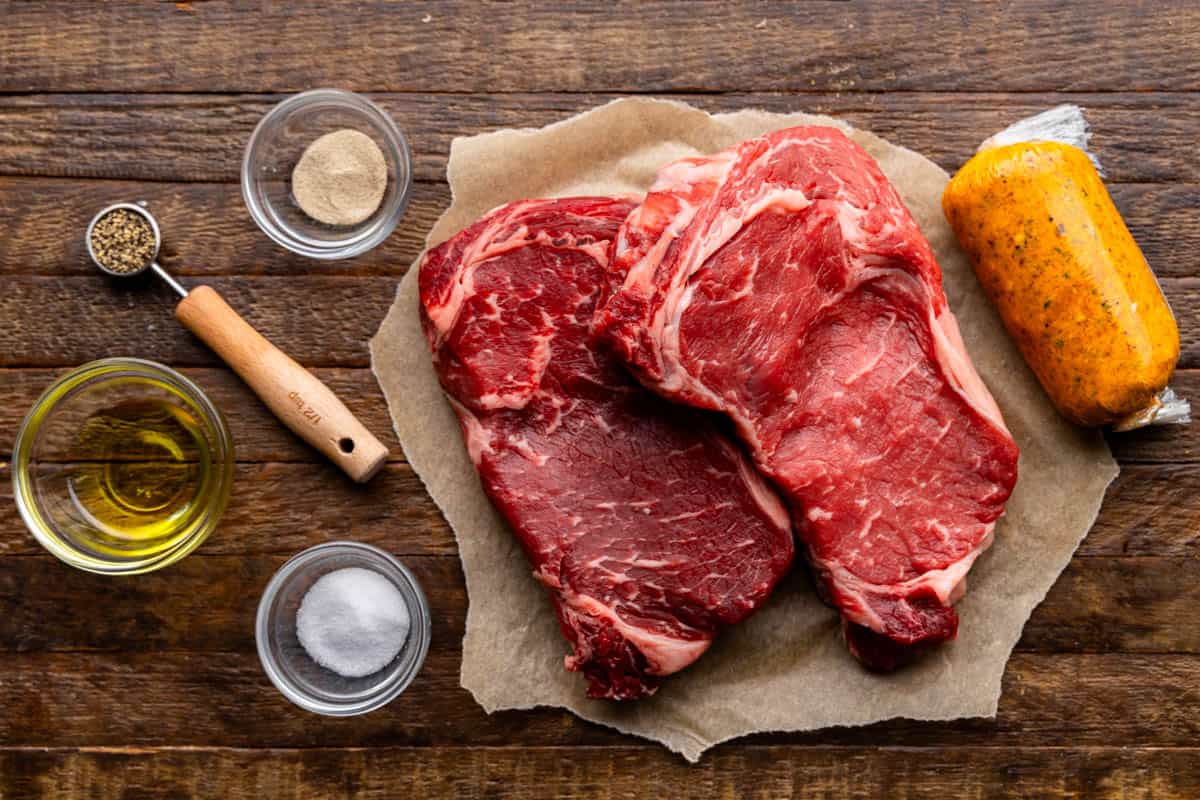
- Ribeye Steaks: at least 1-inch thick, with or without the fat trimmed. Ribeyes are fatty but any fat along the exterior that you won’t eat, feel free to trim it off.
- Olive Oil: or other high-heat oil for searing like, vegetable or canola.
- Spices: salt, both black pepper and white pepper for flavor without too much spice.
- Compound Butter: adding in a resting butter or compound butter takes what is already an amazing steak, and knocks it through the roof. Even if you don’t have the nicest grade of beef, this added butter will fill in the gaps.
Recommended Tools
You need an oven-safe skillet to properly make my ribeye steak recipe. I suggest a classic sturdy cast iron skillet. But any heavy-bottom skillet that can go from stovetop to oven will do.
A good instant read and/or internal meat thermometer is a kitchen must-have. Either will help you achieve that perfect doneness, but I highly recommend using a ThermoWorks brand thermometer. I’ve used them for years and have always been super satisfied with their products.
Chef’s Tips
Salting up to 12 hours in advance is never a bad idea. This draws the moisture from deep within the steak and helps evenly distribute the juices throughout the meat when cooked.
Watch for browning and not burning! The goal is to create a crust with deep layers of brown, but don’t go too far and burn it. Too much char is very acrid.
If planning to cut and serve in portions, be sure to slice against the grain. The “grain” looks like lines running through the meat. Cutting into these meat fibers in the opposite direction helps to further break down the proteins and make for an even more tender steak.
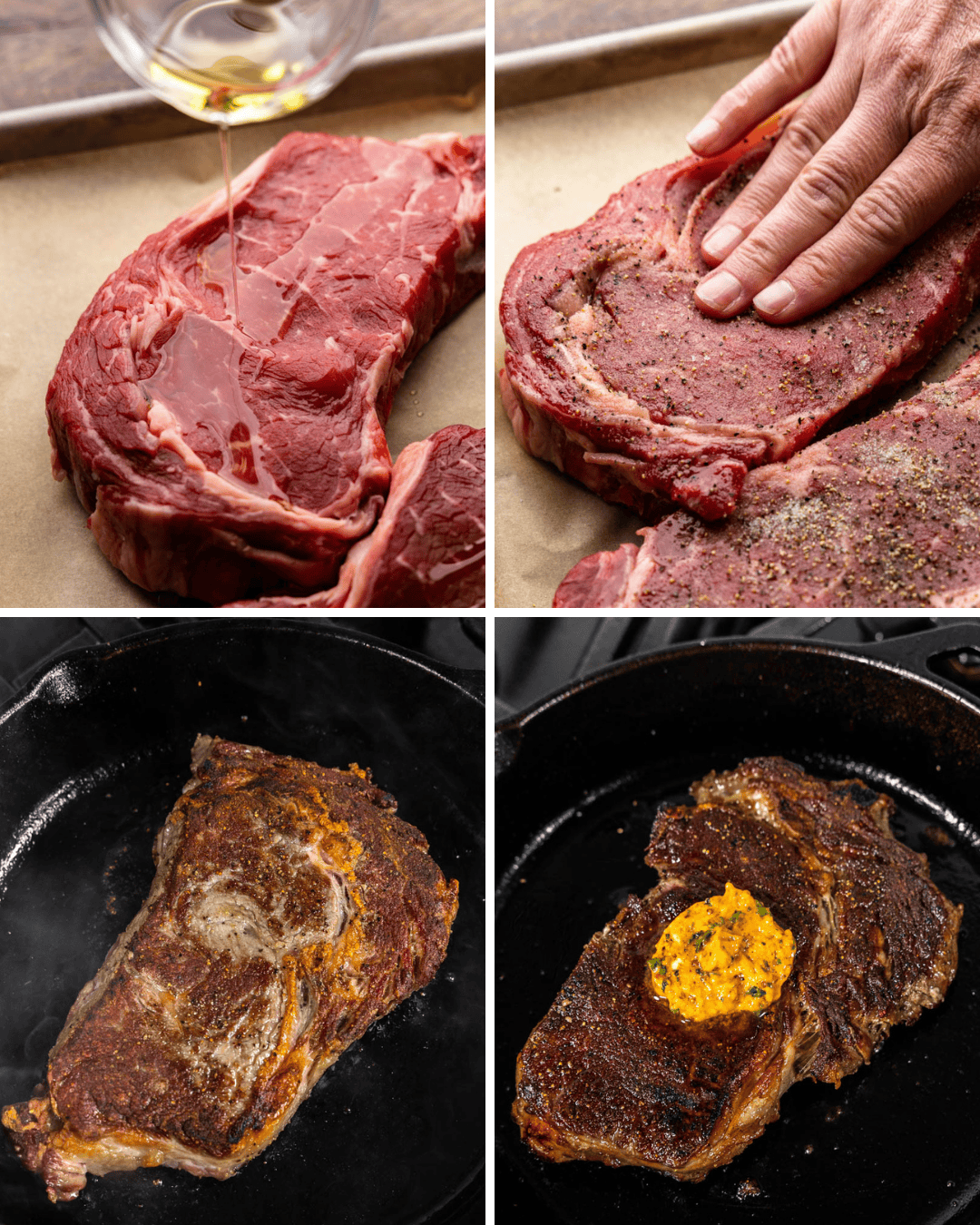
On The Grill
It’s first important to note that ribeye does have more fat than most steaks, so if you are grilling it, be aware that the fat can render down and cause flare ups while grilling. Be careful!
Preheat an outdoor grill to high heat (about 500 degrees). Sear steaks for 3 minutes per side. Reduce the heat to medium-low and continue cooking with the lid closed until the steaks reach the desired level of doneness (130 degrees F for medium-rare).
When the steaks are removed from the grill, immediately top with 1 tablespoon butter each, tent with aluminum foil, and allow the steaks to rest 5 to 10 minutes before cutting into them.
Reverse Sear
You might consider reverse searing steaks that are on the thicker side. This is a more “low and slow” method of cooking, which can help further tenderizer larger steaks. However, it’s not a good idea for steaks that are thinner than 1-inch as they’ll cook too quickly.
Preheat your oven to 250 degrees Fahrenheit. Place a wire rack onto a rimmed baking sheet. Season steaks as instructed in steps 1 and 2 and place onto the wire rack. Bake in the 250 degree oven until the internal temperature of the steaks reaches 10-15 degrees below your target temperature.
Remove from the oven and sear in oil in a heavy skillet over high heat to form a deep golden brown crust.
Butter Baste
This method takes a bit more TLC but does make the steaks intensely flavorful.
Pat steaks dry. Do not add oil to the meat, but still season generously. Heat 2 tablespoons cooking oil in a large heavy skillet over medium-high heat. Add in steak and sear 2-3 minutes. Flip and sear an additional 30 seconds before adding in 4 tablespoons butter and any aromatics you want to use like rosemary, thyme, or smashed garlic cloves. Tip the pan and use a spoon to start basting the steak with the liquids as it cooks.
Once the second side has had a chance to cook for 3 minutes, flip again and continue flipping every 1 minute, basting constantly, until the desired internal temperature is reached.
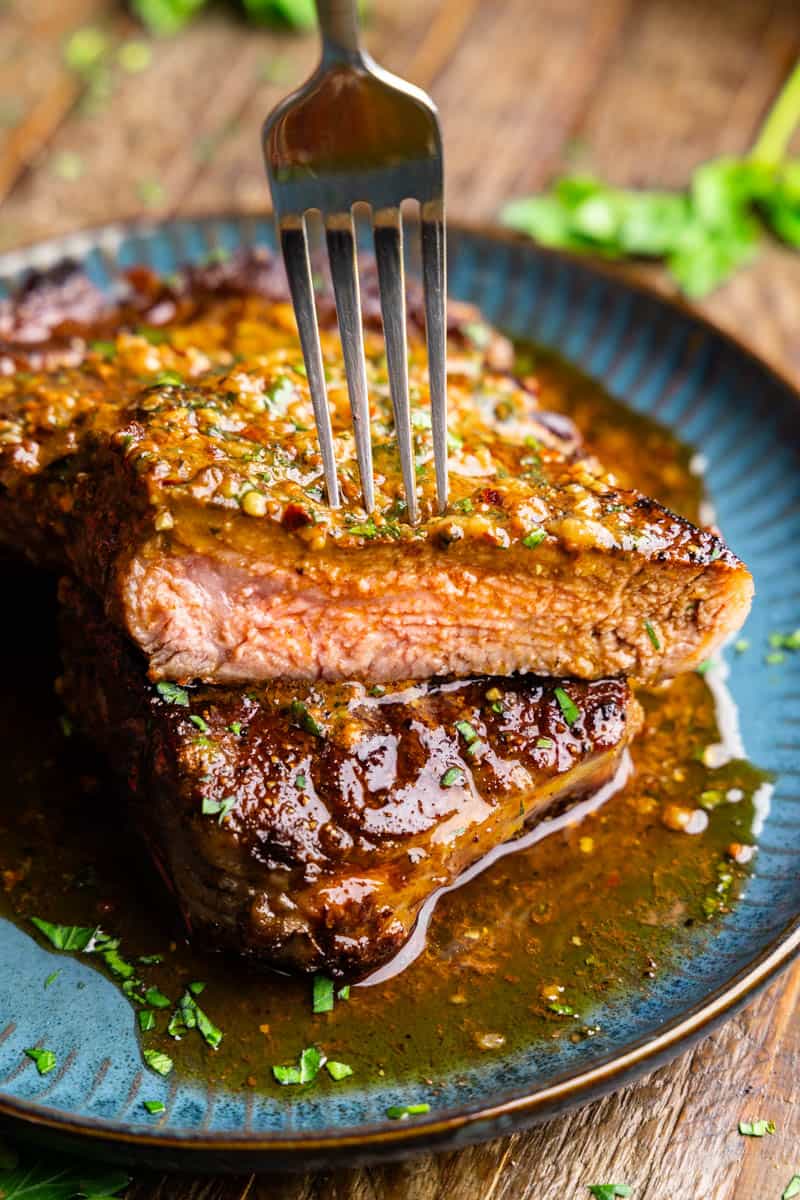
What to Serve with Steak
- Compound Butters: top warm steaks with a coin of flavorful butter. Our cowboy butter will put some kick in your spurs!
- Potatoes: meat and potatoes = match made in heaven! You can’t go wrong with a fluffy baked potato, classic mashed or steakhouse-style mashed potatoes, or crispy garlic and herb smashed potatoes.
- Starches: pair juicy steaks with sides of hearty rice or pasta.
- Veggies: simple vegetables are the best to let the ribeyes shine. I love fresh or frozen broccoli, fresh or frozen cauliflower, asparagus, Brussels sprouts, or really any veg that doesn’t take much effort.
Storage and Reheating Instructions
Refrigerate in an airtight container for up to 5 days.
Reheat portions of ribeye in a skillet over medium heat or wrap in aluminum foil to retain moisture and reheat in a 300 degree oven for 10 to 15 minutes, just until warmed through.
Leftover steak ideas!
If you have leftovers they are terrific to for making a cheesesteak slider or quesadilla.
Slice pieces thin and use them in fajitas, steak sandwiches, gyros, burritos or other wraps!
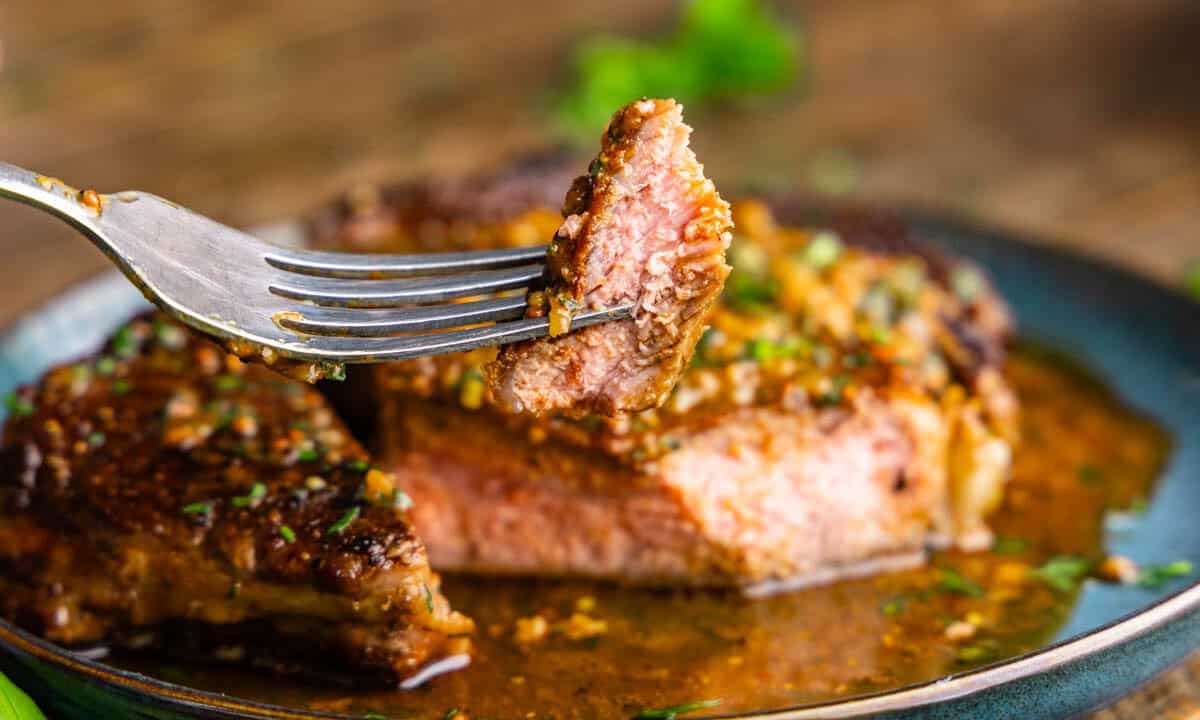
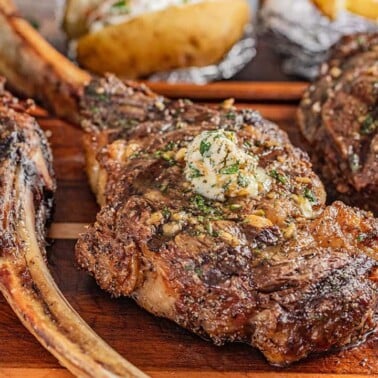
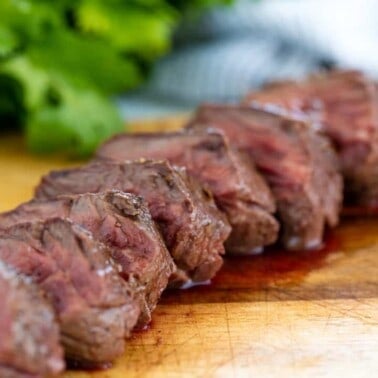
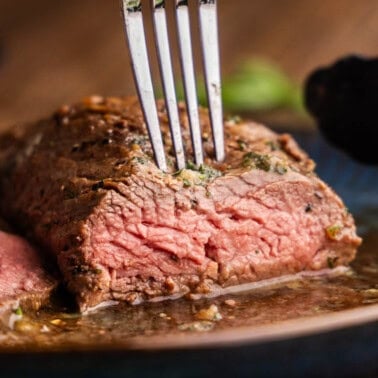
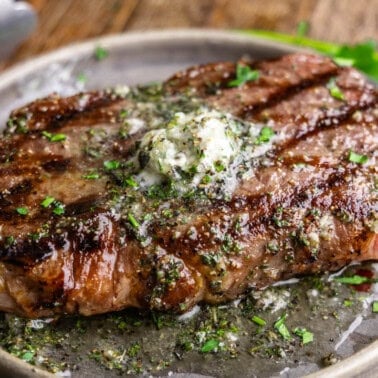
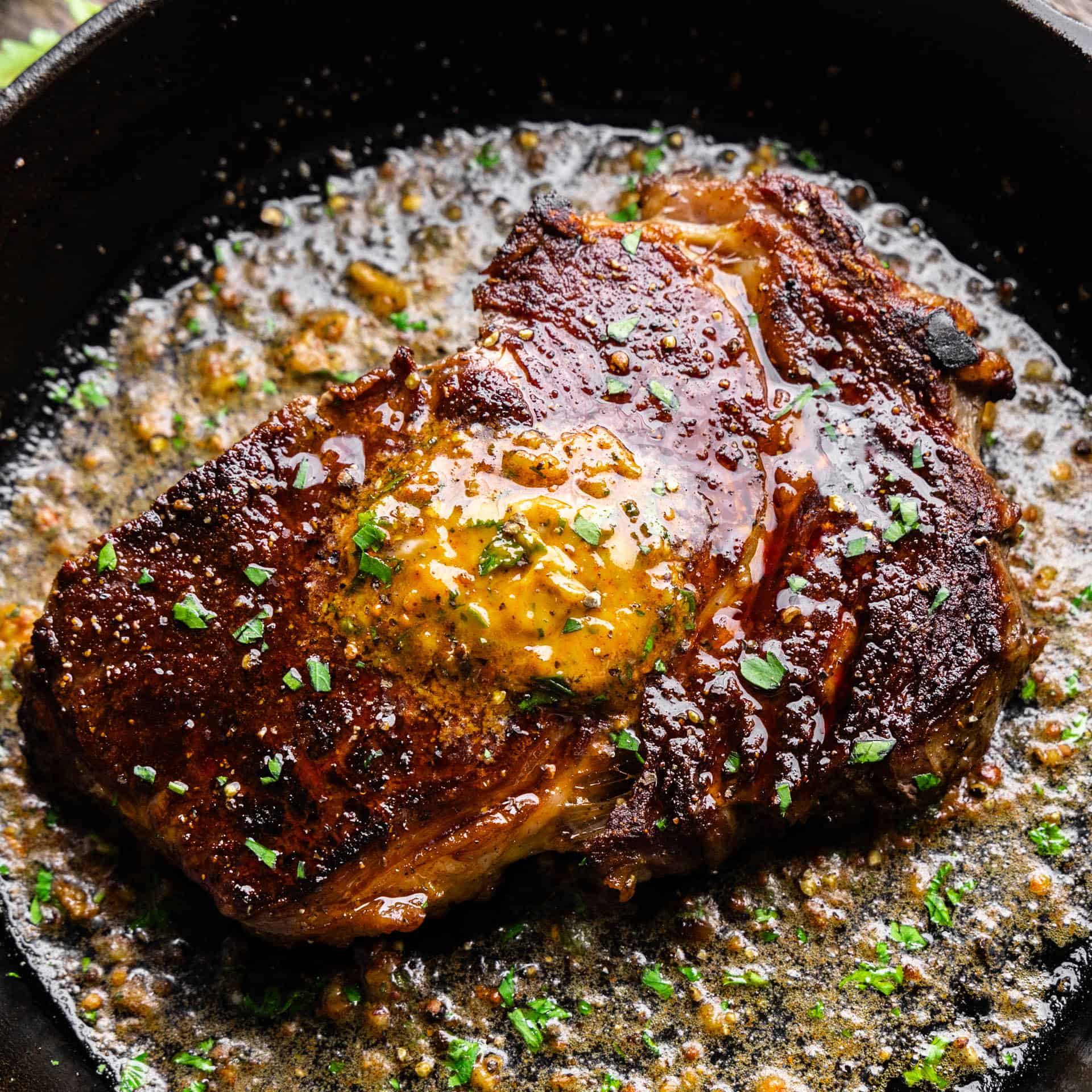
These are such excellent directions! I did the reverse sear and the steaks came out perfectly!
Yay! So glad to hear it!
I’ve tried this recipe twice, and each time the steaks come out absolutely fantastic!
This receipt is the bomb.
I’m sorry but as a super senior citizen, I don’t know if a bomb means good or bad to you. To me it means bad. So which is it? Thank you.
Usually it means really good!
Thank you , I’ll cook this stake tomorrow.
Always great advice from The Stay at Home Chief!!